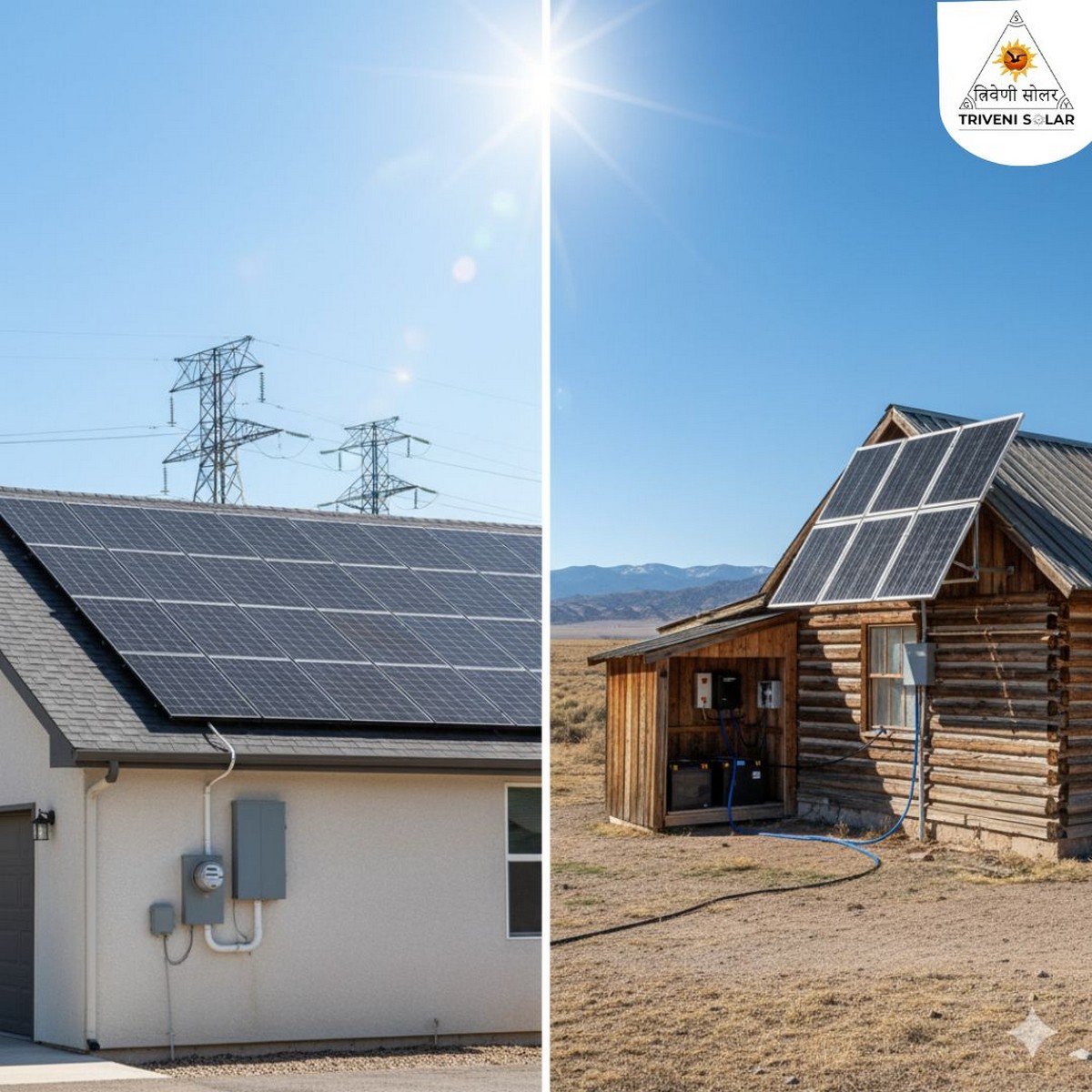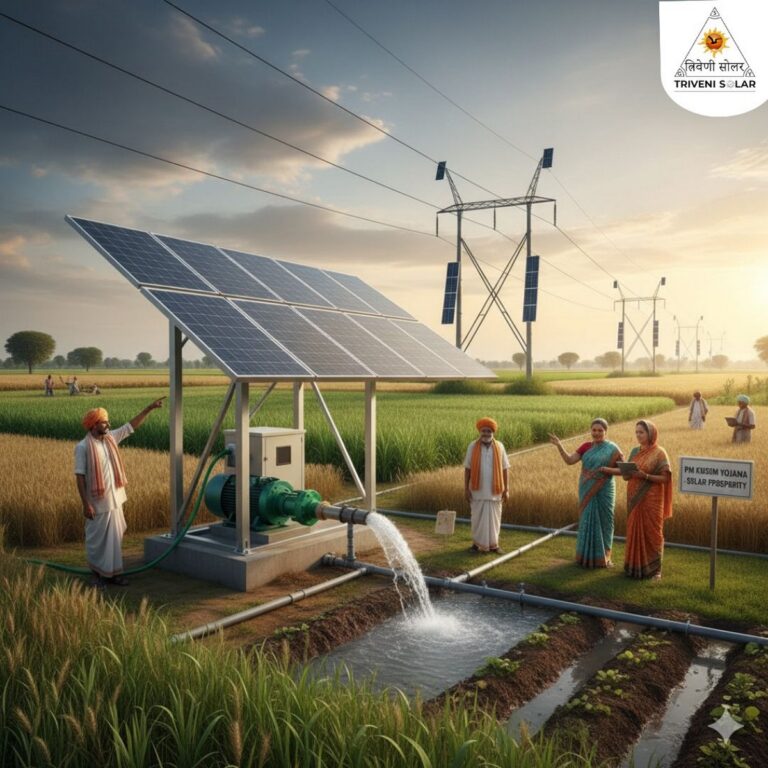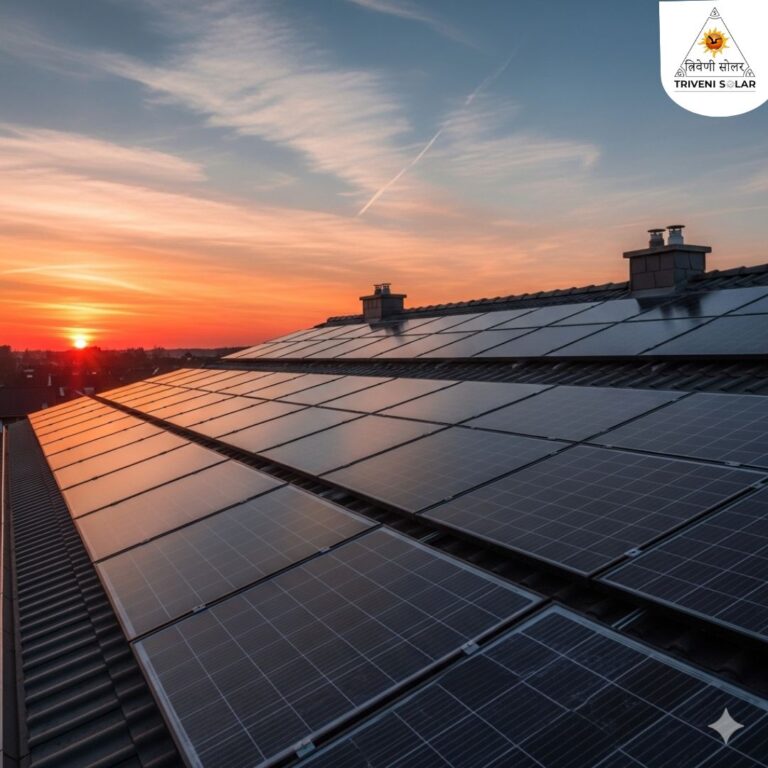On-grid solar systems are connected to the utility grid, allowing for net metering and lower initial costs. Off-grid systems operate independently with battery storage, providing energy independence but at a higher upfront cost. Hybrid systems combine both, offering flexibility and backup power.
Table of Contents
- Understanding On-Grid Solar Systems
- Exploring Off-Grid Solar Systems
- Hybrid Solar Systems: The Best of Both Worlds
- Government Schemes Supporting Solar Adoption in India
- Cost Analysis and ROI Calculations
- Case Studies: Real-Life Solar Installations in Jharkhand
- Choosing the Right Solar System for Your Home
- FAQs
Understanding On-Grid Solar Systems
On-grid solar systems, also known as grid-tied systems, are connected to the local electricity utility. They allow excess electricity generated by your solar panels to be fed back into the grid, earning you credits via net metering.
Components of an On-Grid System
- Solar panels
- Grid-tied inverter
- Mounting structures
- Net meter
- Monitoring system
Advantages of On-Grid Systems
- Lower Costs: No need for expensive batteries.
- Net Metering: Sell excess electricity to the grid.
- Reliable Power: Continuous electricity supply from the grid.
Considerations
- Dependent on grid power—no backup during outages.
- Net metering policies vary by state.
- Requires proper utility permissions.
Exploring Off-Grid Solar Systems
Off-grid solar systems operate independently from the utility grid, relying entirely on battery storage for energy. They are ideal for remote locations without grid access or for homeowners seeking complete energy independence.
Components of an Off-Grid System
- Solar panels
- Solar charge controller
- Batteries for storage
- Inverter
- Monitoring system
Advantages of Off-Grid Systems
- Energy Independence: Complete control over your electricity usage.
- Reliable Power: No dependency on local grid outages.
- Remote Access: Perfect for rural homes and cabins.
Considerations
- Higher upfront costs due to battery storage.
- Regular battery maintenance is required.
- System sizing must meet your daily electricity needs.

Hybrid Solar Systems: The Best of Both Worlds
Hybrid solar systems combine the benefits of on-grid and off-grid systems. They are connected to the grid but also have battery storage for backup, providing flexibility and an uninterrupted power supply.
On-Grid Advantages of Hybrid Systems
- Net metering benefits from the grid
- Backup during power outages
- Optimal energy management
On-Grid Considerations
- Higher complexity and initial cost
- Maintenance of batteries is still required
- Installation requires careful planning
Government Schemes Supporting Solar Adoption in India
The Indian government has introduced multiple initiatives to encourage solar adoption:
- PM KUSUM Scheme: Supports solar pump installations for farmers and grid-connected solar systems for households.
- Suryagrahan Yojana: Subsidies for residential solar panel installations in select states.
- Net metering policies promote energy credits for excess solar electricity.
These schemes reduce upfront costs and accelerate the ROI for Indian homeowners.
Cost Analysis and ROI Calculations
Cost and ROI vary depending on the system type:
| System Type | Average Installation Cost (INR) | Maintenance Cost | ROI Period |
|---|---|---|---|
| On-Grid | ₹50,000 – ₹150,000 per kW | Low | 4–6 years |
| Off-Grid | ₹70,000 – ₹200,000 per kW (including batteries) | Moderate | 6–8 years |
| Hybrid | ₹90,000 – ₹250,000 per kW | Moderate | 5–7 years |
Case Studies: Real-Life Solar Installations in Jharkhand
Here are examples of homeowners in Jharkhand who installed solar systems with PM Surya Ghar:
- Mr. Ramesh Kumar, Ranchi: Installed an on-grid 5 kW system. Achieved a 40% reduction in electricity bills.
- Ms. Sita Devi, Jamshedpur: Installed off-grid solar for a remote home. Enjoyed uninterrupted power supply during frequent outages.
- Mr. Arvind Singh, Dhanbad: Hybrid system with battery backup. Benefited from net metering while having backup during blackouts.
Choosing the Right Solar System for Your Home
Factors to consider:
- Daily energy consumption
- Budget constraints
- Grid reliability in your area
- Eligibility for government schemes
- Long-term ROI and maintenance preferences
Homeowners can use this guide to select a system that maximizes savings while ensuring a reliable power supply.
FAQs
What is the difference between on-grid and off-grid solar systems?
On-grid systems are connected to the utility grid and allow for net metering, while off-grid systems rely entirely on battery storage and operate independently of the grid.
How do I apply for the Suryagrahan Yojana?
Homeowners can apply online through the state energy department portal. Eligibility criteria include residential property ownership and location within participating states.
What are the maintenance requirements for solar systems?
On-grid systems require minimal maintenance, mostly cleaning panels and inverter checks. Off-grid and hybrid systems require additional battery maintenance and periodic performance checks.
Can I upgrade my on-grid system to a hybrid system?
Yes, you can add battery storage to an existing on-grid system to create a hybrid setup, ensuring backup during power outages.
What are the environmental benefits of installing solar panels?
Solar energy reduces dependency on fossil fuels, lowers carbon emissions, and promotes sustainable energy usage, contributing to a greener environment



